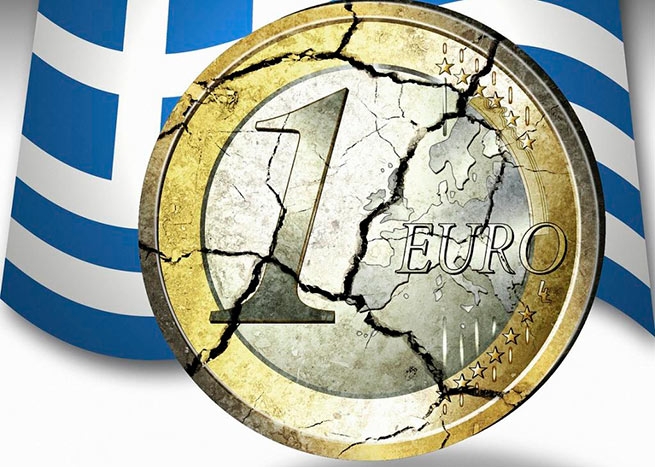The new Mitsotakis government has set the economy as its main goal, and this is no coincidence, as there are two very serious challenges that it must immediately deal with.
These are the management of the public debt, which has risen to an all-time high – Greece’s external debt approached 542 billion euros in June 2023 – and the privatization of banks, from which the Greek state will lose 50 billion euros … which it borrowed under the second and third memorandum.
As for the ratio of debt to GDP, this is an enchanting picture, since its non-expansion is clearly due to the following factors:
The nominal GDP of Greece in 2023 will be about 220 billion euros, which means growth of 3.5% in real terms. And that means a debt-to-GDP ratio of 246.36%, a staggering figure.
Greece is supported by the Recovery Fund, which still has 18 billion, since 418 large companies will receive this 18 billion, but a total of 700,000 companies have received nothing from the Recovery Fund …
Greece is supported by the ECB’s policy because, although it does not have an investment grade, under the pretext of a pandemic that everyone has already forgotten about… The ECB bought 40 billion Greek debt in violation of its basic principles, but it did it for the sake of the stability of the Eurozone….
Greece’s investment rating will be upgraded, and 400 new funds will come to Greece.
The debt-to-GDP ratio will continue to decline as long as inflation remains high and GDP growth is above 3%.
But the worst thing about Greece is that there is no working production model here, in fact, there is no serious production at all. The focus is mainly on agricultural products, medicine production and tourism… GDP growth is the result of rising inflation and borrowings from the Recovery Fund. From 2024 onwards, we will return to normal life when these borrowings are covered for us. And if there isn’t some new pandemic or global financial crisis or nuclear war by then, we’ll have to invent them to keep getting the same support from EU.
It should also be noted here that all forecasts for Greece are based on the fact that tourism is forever, but this is a very dangerous delusion. It’s hard for Greek citizens to come to terms with this, but the country, which exports about 47 billion euros, has provided its residents with almost 50 billion euros in benefits.
Greece’s main export assortment consists of the following goods and services:
- Oil products – about 30% of total exports (meaning re-export, since Greece practically does not produce its own oil)
- Medicines – about 7% of total exports
- Food products – about 6% of total exports. This includes olives, olive oil, fruits, vegetables, cheeses, wine, etc.
- Chemicals – about 5% of total exports
- Textiles – about 4% of total exports
- Services – about 20% of total exports. This includes tourism, transport, communications, finance, etc.
- In addition, Greece also exports metals, machinery, electrical equipment, shipbuilding, cosmetics, jewelry, other goods and services, in the total it is about 28%.
Privatization of banks
From September 2023 the process of privatization of Greek banks will begin. This refers to the sale of state shares in the statutory funds of Greek banks. The process will start with Eurobank by September 15, 2023, followed by Ethniki and Piraeus…
However, bank privatization could be the biggest failure of the Mitsotakis government. The banks say, and rightly so, “We paid for the debt haircut in 2013 with PSI and lost 30 of the 40 billion in government bonds.” Banks are right that without the haircut they wouldn’t have gone bust then, but later found themselves on edge due to NPEs (Non-Performing Risks). The rescue of the Greek banks was done at the expense of the Greek government, the whole process was sloppy and unsuccessful, which will lead to a big disaster.
HFSF (Greek Financial Stability Fund) has invested in the share capital of:
- Εθνική 8.46 billion euros,
- Eurobank 5.72 billion euros,
- Πειραιώς 9.84 billion euros.
- Alpha bank 3.96 billion euros.
HFSF also covered the funding gap of the banks, which were divided into good and bad. Let’s remember 7.47 billion Agrotiki bank, which ended up in the hands of Piraeus, Postal Savings Bank (Ταχυδρομικό Ταμιευτήριο) 3.7 billion, which passed into the hands of Eurobank, Proton Bank 562 million, also merged into Eurobank, FBBank 456 million included Εθν ική τράπεζα and numerous cooperative banks. The sum of all these investments amounted to 54 billion euros…
At that time, HFSF had at its disposal:
- 81.7% Alpha bank,
- 95.2% Eurobank
- 84.4% Εθνική
- 81% Πειραιώς
HFSF currently owns the following shares in Greek banks:
- 1.4% Eurobank worth 75 million euros
- 40.34% Εθνική worth 2.01 billion euros.
- 27% Πειραιώς worth 920 million euros
- 9% Alpha bank in the amount of 310 million.
The sum of all these assets is 3.31 billion euros. The Hellenic Financial Stability Fund has invested a total of 54 billion euros, and their value turned into 3.31 billion, that is, an underestimation of -94% … HFSF will lose almost 50 billion euros.
In the US, Citigroup and other banks and companies were nationalized in 2009. The US government, when it began selling shares in 2010 and 2011, came out with a significant profit, taking in a total of $41 billion from all the nationalized companies.
But in Greece there will be a loss of 50 billion euros, for which we borrowed 3 times – with 3 memorandums – and which we will repay “until the end of the world.”







More Stories
Financial Times: Russia is actively preparing sabotage in Europe
Shock: Drag queen will carry the Olympic flame in Paris
Greece consistently ranks last in the EU for media freedom